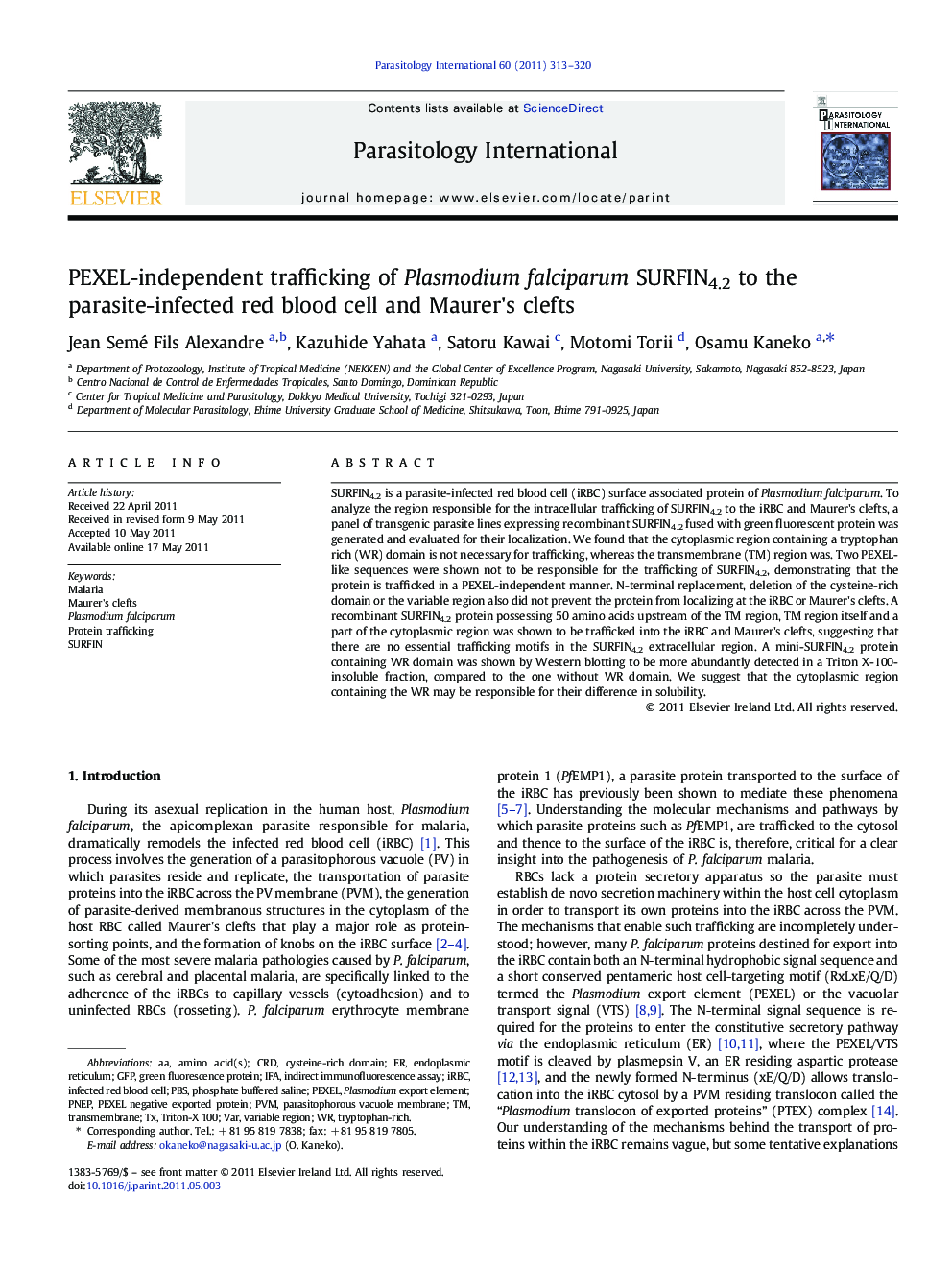| Article ID | Journal | Published Year | Pages | File Type |
|---|---|---|---|---|
| 3417999 | Parasitology International | 2011 | 8 Pages |
SURFIN4.2 is a parasite-infected red blood cell (iRBC) surface associated protein of Plasmodium falciparum. To analyze the region responsible for the intracellular trafficking of SURFIN4.2 to the iRBC and Maurer's clefts, a panel of transgenic parasite lines expressing recombinant SURFIN4.2 fused with green fluorescent protein was generated and evaluated for their localization. We found that the cytoplasmic region containing a tryptophan rich (WR) domain is not necessary for trafficking, whereas the transmembrane (TM) region was. Two PEXEL-like sequences were shown not to be responsible for the trafficking of SURFIN4.2, demonstrating that the protein is trafficked in a PEXEL-independent manner. N-terminal replacement, deletion of the cysteine-rich domain or the variable region also did not prevent the protein from localizing at the iRBC or Maurer's clefts. A recombinant SURFIN4.2 protein possessing 50 amino acids upstream of the TM region, TM region itself and a part of the cytoplasmic region was shown to be trafficked into the iRBC and Maurer's clefts, suggesting that there are no essential trafficking motifs in the SURFIN4.2 extracellular region. A mini-SURFIN4.2 protein containing WR domain was shown by Western blotting to be more abundantly detected in a Triton X-100-insoluble fraction, compared to the one without WR domain. We suggest that the cytoplasmic region containing the WR may be responsible for their difference in solubility.
Graphical abstractFigure optionsDownload full-size imageDownload as PowerPoint slideHighlights► Region of Plasmodium falciparum SURFIN4.2 protein responsible for the infected red blood cell (iRBC) and Maurer's cleft localization was determined. ► Recombinant mini-SURFIN4.2 is able to trafficked to the iRBC and Maurer's cleft. ► Transmembrane region, but not PEXEL-like motif is essential for the transport to the iRBC and Maurer's cleft. ► Extracellular region appears not to be essential for the transport to the iRBC and Maurer's cleft.
